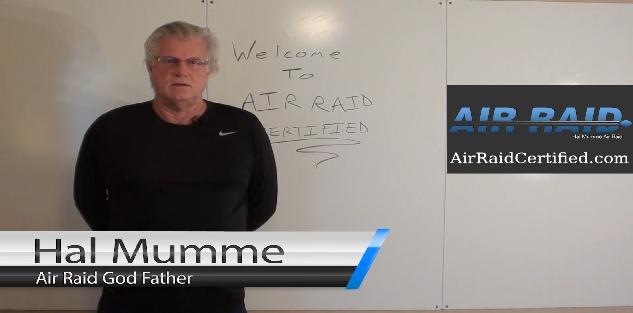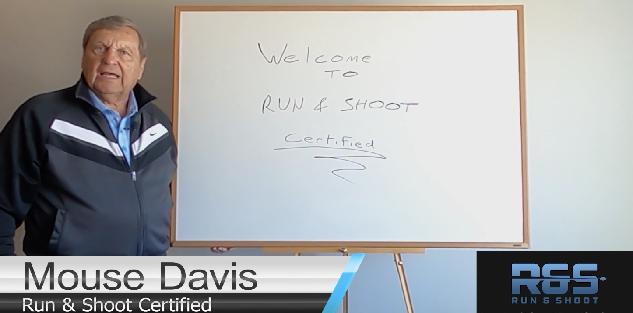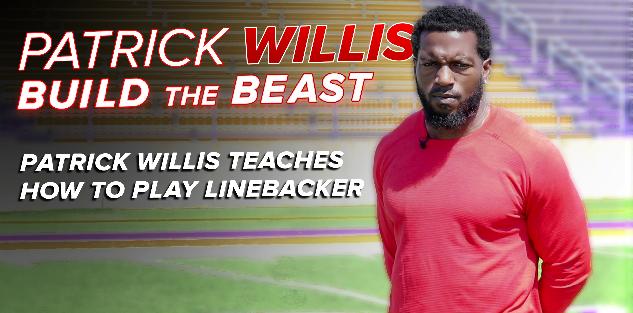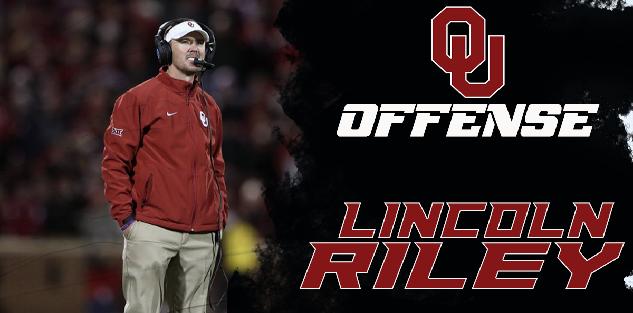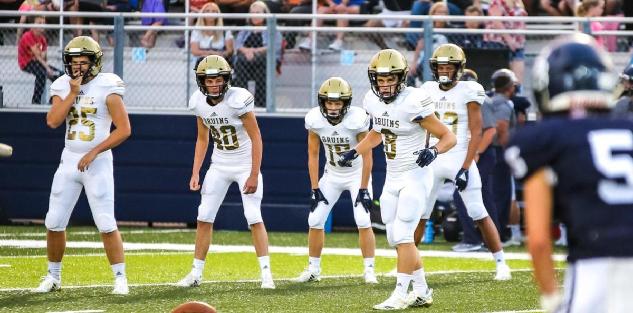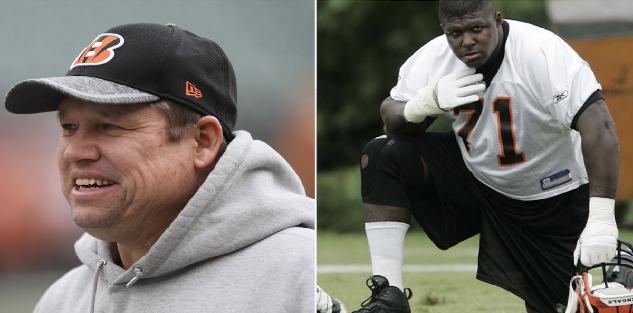Featured courses
- Jim Thorpe Award Winner Jahdae Barron’s 4 Drills for Dominating Receivers by Grant Young
- 5 Tips to Improve Your Football Game Plan by Andrew Dohre
- Game Changer RPO Football : Wing-T Offense by Andrew Dohre
- Mastering the Pass Rush: Expert Drills and Progression Tips from UCLA’s Coach Ikaika Malloe by Andrew Dohre
- 3 SPO’s to Protect the Passing Game and create opportunities in space by Keith Grabowski
- The Art of Running the Corner Route- Coaches and Players Prespectives by CoachTube Staff
- Evolve your Defense with Quarter, Quarter Half to Stop RPO by Coach Grabowski
- Top 10 College Football Players to Watch for in 2022 by Alec Burris
- Clemson vs. Syracuse Matchup of the Week by Keith Grabowski
- Sprint Out Passing: Move the Pocket for Success by Keith Grabowski
- Unlocking the True Potential of Your Special Teams Play by Keith Grabowski
- The Most Important Components of Air Raid by Keith Grabowski
- 4 Plays that Benefit from Bunch Formations by Keith Grabowski
- 3 Third Level RPOs for Explosive Plays by Keith Grabowski
- The Role of the Screen Game in Explosive Offense by Keith Grabowski
- The Chess Match: Win on the Perimeter (Part 1) by Coach Grabowski
- Unlocking the Power of Gap Manipulation to Limit Explosive Plays by Keith Grabowski
- TCU’s 3-3-5 and facing bigger personnel by Keith Grabowski
- Elevating Your Team: Strategies from Coach Matt Ruhle by Keith Grabowski
- 7 RPO’s for your playbook by Coach Keith
- Beyond Quarters - The Need For Additional Coverage Concepts by Keith Grabowski
- 5 Core Offensive Priniciples for a Winning Football Formula by Keith Grabowski
- Win Downfield - Attacking Different Areas Deep with 3rd Level RPO by Coach Grabowski
- WAKE FOREST’S UNIQUE RPO GAME by Keith Grabowski
- Adjustments to Defeat the Tite Front by Keith Grabowski
- Attack Defenses with The Versatile Y-Cross Concept by Keith Grabowski
- Play Action is a Cheat Code! - 5 Play Action Concepts to Increase Your Expected Points by Keith Grabowski
- Question from Rutgers OC - What does your offense say about your coaching? by Keith Grabowski
- Gap Schemes vs. Tight Fronts, Play Action Shots and Misdirection by Coach Grabowski
- Setting up your young Qb for success by Keith Grabowski
- The Hot Gap plus 3 Gap Scheme RPO’s to Stress the Defense by Keith Grabowski
- How Football Coaches Can Build A Game-Changing Special Teams Unit by Grant Young
- Master the Art of Quick Passing for High Completion Percentages by Keith Grabowski
- How to Be an Influential Football Coach by Grant Young
- How to Maximize Tackling Efficiency within Scheme by Keith Grabowski
- Offensive Drills of the Week by Keith Grabowski
- How a Stoplight Can Make Your Fly Sweep Takeoff by Keith Grabowski
- Keep your Drills Fresh and Your Skills Developing - Offense by Keith Grabowski
- Coach Kevin Kelley, Outside The Box by Keith Grabowski
- Want your defense to get off the field after third down? Sims and Creepers are the answer! by Keith Grabowski
- Create More Turnovers with Circuit Training & Win More Games! by Keith Grabowski
- Devastate the Defense with TE RPOs by Keith Grabowski
- Red Zone adjustments by Keith Grabowski
- CoachesClinic.com Featured Matchup: Cincinnati vs Indiana by Caleb Hopkins
- 3 NFL ZONE RUN PLAYS FROM WEEK 7 by Alex Kirby
- Sonny Dykes Teaches You How to Put Together an Offense by Coach Grabowski
- FIVE REASONS TO RUN THE 3-3 DEFENSE by Alex Kirby
- Getting Your Defense Ahead - 1st and 2nd down Pressures from Noah Joseph by John Grayson
- Chad Morris Teaches How To Builds an Offense by Coach Grabowski
- Get Your Offense a +1 With the QB Run Game by Coach Grabowski
- Are You Causing a 14 Point Turnaround...Against Your Team? by Coach Grabowski
- Learn How to Improve Your Offense with USC’s “Harrell Effect” by Coach Grabowski
- The Power of Influence - Rick Jones, Mizzou by Coach Grabowski
- Easy QB Runs to Drive Defenses Crazy by Ryan Eisenberger
- How many different ways can you make the defense cover everyone? by Ryan Eigenberger
- Win Passing Downs with Creepers and Sims by Coach Grabowski
- Always have a plan to play your best 11 by Keith Grabowski
- Dominate the Defense with Double Teams by Coach Grabowski
- Buffalo OC teaches his model for game planning by Keith Grabowski
- Put your 3 Deep Coverage in a Better Position with Zone Alert Rotations by Coach Grabowski
- 5 Keys to Using Trick Plays by Coach Grabowski
- Learn from 'Juggernaut' Offense by Keith Grabowski
- Bob Wylie - Offensive Line Breakdowns by Coach Grabowski
- Utilizing the Hybrid Linebacker to take away Offensive Advantages by Coach Grabowski
- Always have a plan to play your best 11 by Keith Grabowski
- Coachesclinic.com Featured Matchup: #6 Oklahoma vs #21 Texas by Caleb Hopkins
- Easy for You - Difficult for Them Adjustments by Keith Grabowski
- Coachesclinic.com Featured Matchup: Davidson College vs Presbyterian by Caleb Hopkins
- Week 5 National High School Football Rankings by Keith Grabowski
- Protecting Aaron Rodgers (and your own QB) by Caleb Hopkins
- Defensive Drills of the Week by Keith Grabowski
- Woo Pig - Add a wrinkle with these Arkansas Downhill Run Variations by Keith Grabowski
- Coachesclinic.com Featured Matchup: #7 Cincinnati vs #9 Notre Dame by Caleb Hopkins
- Offensive Drills of the Week by Keith Grabowski
- Coach Jason McEndoo Teaches #12 Oklahoma State’s Top Running Play by Keith Grabowski
- Adjustments - Attach Screens to your best plays, defend star receivers, & movement to stop the run by Keith Grabowski
- Coachesclinic.com Featured Matchup: Army vs #16 Wake Forest by Caleb Hopkins
- How To Implement A Running-Back-By-Committee Scheme by Brandon Ogle
- How To Become The Most Feared Offensive Lineman In Your League by Chrisian Benavides
- Wylie, McNally and Alexander Key Coaching Points on the Wide Zone Play by Keith Grabowski
- #21 Coastal Carolina’s play that is a whole offense within itself by Keith Grabowski
- 4 Plays that Benefit from Bunch Formations by Keith Grabowski
- Best Mesh Concept Plays by Ron McKie
- Forming Families For Football by Darryl Page
- Top 5 Things Coaches Should Strive To Get Out Of Spring Camp by Darryl Page
- 10 Tips To Know Before Attending Football Camps by James Breland
- Offensive Line Drills by Rick Bouch
- You’re a captain, now what? 5 Tips to bring your team together and establish yourself as a true leader by Lester Crafton
- COACHING THE 4-2-5 DEFENSE VS SPREAD TEAMS by Alex Kirby
- Gifts From Grinch by Coach Grabowski
- A Package to Help You Win Mid to Late Season by Coach Grabowski
- The Future of American Football: How to Run the Spread Offense by Coach Scott
- Chris Ash teaches Longhorn Tackling by Coach Grabowski
- The misunderstood Yet Powerful Run Scheme - Duo by Coach Keith
- THE GUS MALZAHN QUARTERBACK COUNTER PLAY by Alex Kirby
- FIVE TIPS FROM GUS MALZAHN ON HOW TO BUILD YOUR PLAYBOOK by Alex Kirby
- LITTLEST KID ON THE FIELD TRUCKS LINEMAN – YOU CAN’T MAKE THIS STUFF UP by Jacob
- HOW TO MAXIMIZE YOUR OFFSEASON FOOTBALL TRAINING by Dominic
- BAD CALL, GREAT COACH: THIS IS WHY PLAYERS LOVE PETE CARROLL by Jacob
- How to Get Recruited for Collegiate Sports by Brandon Ogle

Sonny Dykes Teaches You How to Put Together an Offense
As your season wraps up, or as you are preparing to get your camp going in early 2021, it’s time to take a look at what you have available with your personnel and put together a plan that best fits them. Head coach at SMU Sonny Dykes has a detailed plan in how they go about putting together their offense.
A lot of coordinators start with looking at the quarterback. Let’s face it, he will be a key piece in making decisions and moving the ball down the field. However, Coach Dykes looks at the QB last.
For him, it is very important to understand who the guys are upfront, and what they allow the offense to do. He covers two distinctly different scenarios with evaluation:
Bigger offensive linemen “Road Graders”
- Bigger splits to create 1 on 1’s
- Pass Pro vertical sets and stop bull rushers
- Create lanes for the QB to see/throw through/run through
- Run game - simple and downhill (inside zone and draw)
Smaller and quicker “Athletes”
- Smaller splits allows more double teams
- More athletic/ability to pull and gap scheme (can pull C, G, or T)
- Set more firm - don’t allow penetration and adjust to pass rush
- Allow more run game diversity, set up Play Action, RPO
- More of a lateral run game (OZ)
The five guys up front are the most important organization on the team. Coach Dykes calls the “Grinders, leaders, glue guys that allow you to become a tough football team.” They need to be the starting point of determining what you run. The offense always must be adjusted to fit them first.
Next, Coach Dykes looks at skill players starting with the wide receivers. Are they bigger guys or smaller quicker guys?
- Smaller quicker create 1 on 1 options
- Bigger jump balls/be physical
Then evaluate the running backs.
- Downhill guy
- Make people miss guy
- Tailor make plays to their strengths
Finally, he evaluates the Quarterback. Can he run? That’s a game changer. A running QB opens diversity in offense and makes him the great equalizer.
After evaluating those guys, another critical piece which the coach looks for is tight ends and fullbacks. Many teams have to “create” these players - borrow them from the defense or move them from another position. Coach feels everyone has a fullback on their team. You just have to look for him.
- A fullback changes everything
- Football was a 21 personnel game
Advent of the spread and Air Raid saw a move to 11 then 10 personnel. Defenses adjusted like they always do to offense:
- When it’s 10 personnel the defense only has 5 gaps to control
- Defense can get creative with what you are doing up front
Adding a fullback into your offense can create 6 and 7 man blocking surfaces. This forces the defense to commit more defenders to be gap sound and therefore can affect their ability to blitz. The chalk goes back to the offense! Dykes feels that today’s defenses are not designed to hold up against 12 and 21 personnel.
He points out that you must always find a way to get the best players on the field, and a good offensive system has enough diversity in the offense to do that.
His final piece of advice in designing the offense is to remember in critical situations, “players not plays.” Great players make great plays. Design the plan with that in mind. The game is about fundamentals - teaching guys how to block and tackle and utilize personnel.
Coach illustrates how a single play - what he believes is the best in football, the “Cross,” can provide the versatility to adapt to personnel. He notes that it is difficult to cover if you understand the details.
Here is the play and coaching points:
Split End (9)
- Must outside release
- Restack, get vert, bottom numbers
- Get shoulder square and run as fast as you can
- Trying to get safety off the has if 2 safety look
- 1 safety/man you can get the ball
Slot (3)
- Option route - 5 yard option route
- Looks like out, can sit vs zone and settle
- Can get creative with this route and adjust to fit personnel
- Sell the play with eyes on the 9 and pivot doesn’t happen as fast and qb can stay on the read longer
- Wes Welker route
- Can run it out of backfield -can turn in
Y (5)
- Go under Sam over Mike
- Release flat and you must get overtop of the linebacker
- Eyes back to QB after clearing him
- If grass, you can throttle down (not settle)
- Man coverage stay on the run
- Run OB 21 yards down the field
- Man coverage=stair climb and get flat to stay friendly for QB
Backside (2)
- Post-Curl
- Critical that P/C is adjustable rout
- Make it such that it is 4th read timing
- Years where it’s their most thrown/completed
- Push to 12, toe in the ground sell post to 17 yards, stick toe in ground and find grass back to the quarterback
(4) Running Back
- Protect to swing
- Stretch to bottom of numbers to move the whole player out of the post curl
QB
- Progression = MOR to Option to Cross to PC to Swing
Coach goes over the route in film here:
Coach Dykes provides a powerful plan for building your offense next season in his clinic “How to Put Together an Offense.” The steps you take this off season are critical in best matching your personnel to your plans. As coach said, “Players not Plays.” Be sure to check this entire clinic out.

